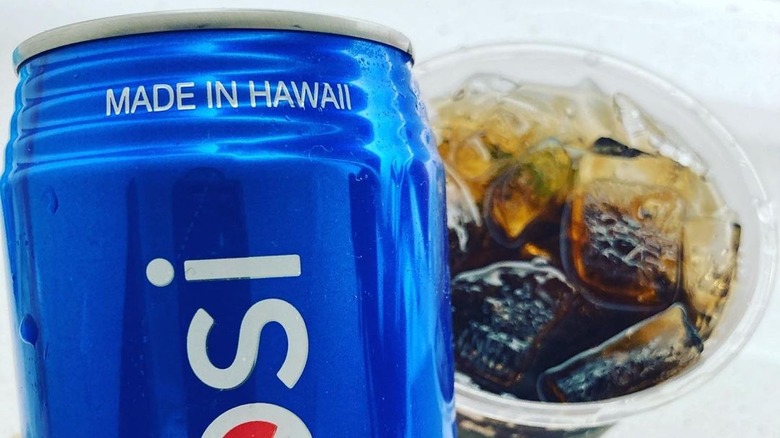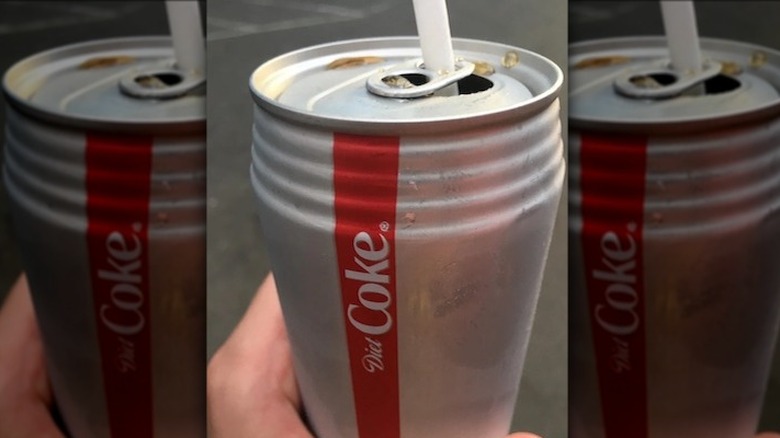Hawaii's Soda Cans Look Different But They're Not Exactly New
Among the many food-related experiences visitors to Hawaii anticipate — fresh poke, roadside shrimp trucks, and shave ice, to name a few — one stands out for its uniquely quirky appeal. Order a Coca-Cola, or almost any other canned soft drink, to go with your hot-and-spicy shrimp, and you may notice the can looks just a little bit different from the cans back on the mainland. It's a subtle difference, but once you see it, you can't unsee it.
According to a YouTube video produced by Half as Interesting, the first thing you may notice is that Hawaiian soda cans have three ridges around the neck. Look closer, and you'll see that Hawaiian-made cans, measuring 2.375 inches in diameter, are bigger than the now-standard 2.125-inch cans. The key term in that sentence is "now-standard," because, until the late 1980s, the large-top can, known as 206es, was the standard in the whole of the U.S. So, why the change and why didn't Hawaii adopt the new standard along with the rest of the country? According to Half Interesting, the change was a cost-cutting measure. Bottom line: Smaller lids translate to less aluminum per lid.
Soda that's made in Hawaii, stays in Hawaii
So why would production plants in Hawaii opt out of the change? To accommodate the new can size, plants across the country had to invest a sizable sum to upgrade their production facilities. It was an upfront cost that would pay off in the long run — at least at plants with a sales volume to support the investment. Hawaii's cans are a throwback because the higher-ups at the time decided it wasn't worth the cost of retrofitting the equipment.
The quirky thing about the production and distribution of canned soda is that it's a heavy product and is expensive to ship. To control costs, soda companies operate locally with a network of manufacturing and distribution plants in close proximity to major markets. In short, soda that's canned in Hawaii, stays in Hawaii — and it's all canned in one place. The Ball Metal Packaging Plant on Oahu is a modestly sized production plant, just 140,000 square feet, producing around a million canned beverages a day. For comparison, Ball's facility in Denver, Colorado turns out 6 million canned beverages daily.
But none of this means you can't find a standard 202 can in the mix at a Honolulu grocery store. Ball's Oahu plant does canning for Coca-Cola, Pepsi, ITO EN, Hawaiian Sun, and Maui Brewing Co. Also, other brands using the familiar style are still imported from the mainland.

